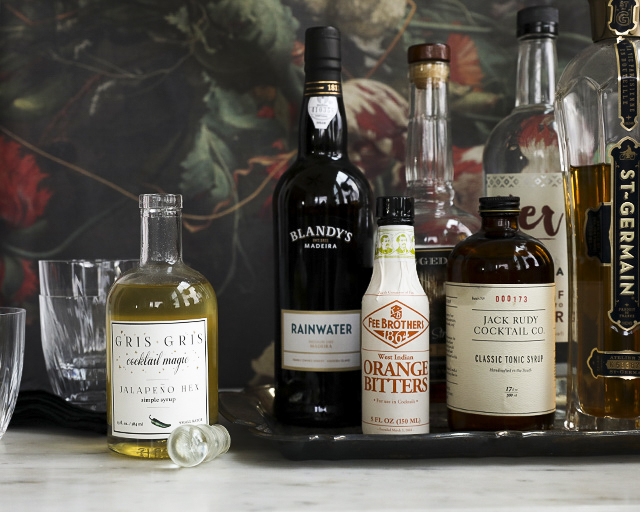4 Must-Have Cocktail Ingredients for Your Home Bar

With more and more mixologists achieving celebrity status, and cocktail lists increasingly including esoteric and exotic-sounding ingredients, the time feels right to revisit our home bar staples. To help ensure that we’re equipped with the necessary add-ins and information to elevate our drinks, we reached out to Michelle Richards, certified sommelier and general manager at the popular St. John’s Restaurant and St. John’s Meeting Place in Chattanooga, Tennessee, for advice. According to Richards, modifiers—fortified wine, bitters, or simple syrup—are the keys to crafting delicious and crowd-pleasing drinks. “You know when a modifier has been used because the drink isn’t one-dimensional,” she says. “It’s multi-layered and exciting.” Here, she discusses how incorporating these add-ins into your cocktails can bring a whole new level of depth and complexity, and shares the four items every home bartender should have on hand to craft delicious and crowd-pleasing drinks.
Bitters. These infusions use a high proof vodka as the base, and lack the sweetness of simple syrup. “Typically, you add botanicals to a bitter,” Richards explains. “And you only use a small amount in cocktails—one or two drops will give you all of these amazing flavors.” (To experience the power of bitters in person, order a Manhattan the next time you’re at a bar.) While there are many store-bought options on the market, skilled mixologists often create their own.
Simple syrup. Made by gently boiling sugar in water, usually with a 1:1 ratio, simple syrup is the perfect cocktail sweetener—and can be adapted in a variety of ways. “Simple syrups are a great opportunity to add in a lot of different flavors,” Richards shares. “For instance, instead of making a one-note rum punch, you can infuse a simple syrup with the flavors of apple, rosemary, cinnamon, and pink peppercorn to create a drink that truly stands apart.” You can purchase many ready-made infusions, but it’s quite easy to pull off making one at home, too.
Shrubs. Another infusion, shrubs use vinegar as the base with various fruits and herbs adding flavor, requiring a very delicate balance to make sure the vinegar isn’t too overpowering. “A little goes a long way,” Richards says of this increasingly popular ingredient. “But they do add a great complexity to a drink. These are just a little more difficult to DIY.”
Fortified wines. Using fortified wines in cocktails is a very of-the-moment technique. Red wines that are typically served in small amounts for dessert (think port, sherry, and madeira), fortified wines have a distinctive depth of flavor. “These wines are a great way to bring in sweetness without adding a bunch of sugar to a drink,” Richards says.” Here, she breaks down the three main types that commonly show up in cocktails:
- Port: Ruby port is more fruit forward, and pairs well with summertime fruits like peaches and berries, while tawny port imparts more of a spice flavor, which makes it perfect for fall.
- Sherry: According to Richards, a lot of craft bartenders are currently using Amontillado sherry, as it adds a nutty flavor with warm baking spices, but also has a bit of tang. In the summer, it offers a nice contrast to bright fruit, like watermelon, she notes.
- Madeira: “Thomas Jefferson brought madeira to the Americas, and it could handle the shifting temperatures on the voyage over,” Richards notes. “So it naturally has the most oxidative flavors.” This ingredient gives off the most intense apple, nutty flavor, heavy with the baking spices of cinnamon, nutmeg and clove.




